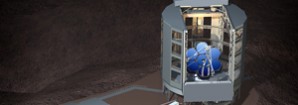Spotlight
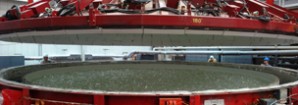
Time Lapse of Casting of GMT's 4th Mirror
The technology blog Gizmodo reported on the casting of the fourth GMT segment this year. Highlights are a time lapse of glass melting and a photo of the glass and mold just before the top is placed on the furnace. The story can be found HERE. Further GMTO information can be found HERE.
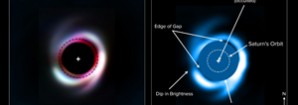
Steward Observatory Astronomers Discover Ultra-rare Two-Armed Spiral in Planet Forming Disk
First year Steward Observatory graduate student Kevin Wagner and his advisor Dr. Daniel Apai were hunting for exoplanets in the Lower Centaurus Crux association when they discovered a brilliant two-armed spiral structure around the young Herbig Ae star HD 100453A. Spiral arms in protoplanetary disks are extremely rare, with only two other similar known objects. The team's images also reveal for the first time a large gap extending to ~21 au from the star, or to about the orbit of Uranus. Both features are seen as a "smoking gun" of planets or other massive bodies interacting with their parent disks. The details of how these planets interact with their host system is an important piece of the planet formation theory that still has relatively few observational constraints. It is still unclear whether the spiral arms are driven by the medium separation binary HD 100453 B at 120 au, and/or by yet unseen planets inside of the spiral arms that are also likely to be responsible for clearing the gap. So far, this newly discovered intricate and puzzling system has raised more questions than it has provided answers, and the team at Steward Observatory can't wait for their next more detailed images.
The UA press release can be found HERE. A blowup of the figure can be found HERE.
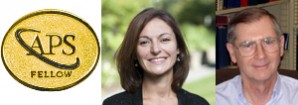
Ozel and Thompson Become APS Fellows
Buell Jannuzi announced the good news that the American Physical Society's Council of Representatives, at its September 2015 meeting, acted favorably on the nominations of Professor Feryal Ozel and Professor Rodger Thompson for Fellowship in the American Physical Society upon the recommendation of the Division of Astrophysics. Election to the Fellowship is limited to no more than one half of one percent of the membership of the APS and is awarded in recognition of their outstanding contributions to physics. Their individual citations are as follows:
Dr. Feryal Ozel, "For pathbreaking theoretical and observational contributions to understanding the behavior of high energy astrophysical systems in the universe, including neutron stars, magnetars and black holes; and for her leadership in the astrophysics community."
Dr. Rodger Thompson, "For work in infrared instrumentation and studies of stellar nucleosynthesis, star formation, and active galactic nuclei; his pivotal role as principal investigator for NICMOS on the Hubble Space telescope; and his use of that instrument to pursue high redshift cosmology, AGNs, and star formation."
Congratulations, Feryal and Rodger.
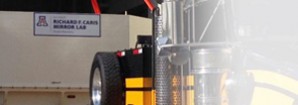
Arizona Stadium Is More Than A Home To Football
ESPN reports on an interesting aspect of the UA Football Stadium, namely, the Richard F Caris Mirror Lab of Steward Observatory. This lab has made, among others, the mirrors for the 6.5m MMT, the twin 8.4m LBT, the two 6.5m Magellan Telescopes, the LSST, and 3 (soon 4) mirrors for the Giant Magellan Telescope. You can find the article HERE and the Mirror Lab website HERE.

How the LMC Teaches Us About the Gaseous Halo of the Milky Way
The most massive satellite galaxy of the Milky Way, the Large Magellanic Cloud (LMC), is currently speeding away from our Galaxy at a speed of ~716 thousand miles per hour after recently reaching its closest approach to the Milky Way. The proximity of the LMC from us (a mere 160 thousand light years) provides us with a unique opportunity to use this galaxy to probe the distribution of gas that surrounds our Galaxy. This gas is likely the main source of fresh material to feed star formation in the Milky Way disk. Because the LMC is moving at such high speeds, the gas through which it is moving leaves a prominent mark on the LMC's disk structure. Dr. Munier Salem at Columbia University and Dr. Gurtina Besla at U. Arizona have modeled this process using high resolution computer simulations, allowing them to make a precise estimate for the density of this gas and the total amount of gas that may surround our Galaxy. the figure shows a simulation of the LMC's gas disk undergoing ram pressure stripping. The white circle indicates the original size of the LMC's disk prior to stripping and color coding represents gas density. The arrow indicates the direction of the wind caused by the motion of the LMC through the gaseous material that surrounds our Milky Way.
Scientific American has written a short article about this work, found HERE.
Pages

For Public
Public events include our Monday Night Lecture Series, world-reknowned Astronomy Camp and Mt Lemmon Sky Center.

For Students
A good place to start if you want to become an undergrad major or grad student, or need to find our schedule of classes.

For Scientists
Find telescopes and instruments, telescope time applications, staff and mountain contacts, and faculty and staff scientific interests.



